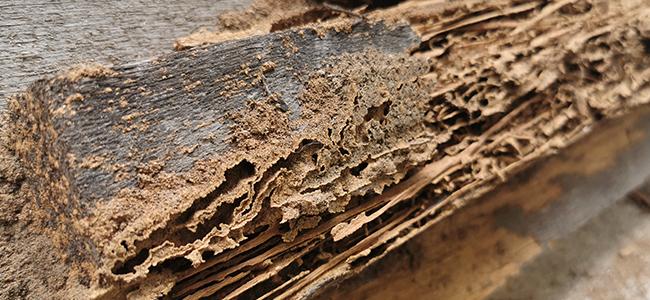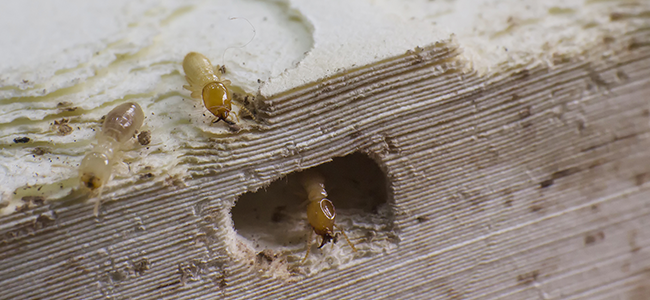
What Every Radford Resident Should Know About Termite Control
01/17/2022
Find out what you need to know about termite control in Radford. ...
READ MORE >

If you live in the Washington D.C. area, especially if you’re a homeowner, a conversation about termite prevention and protection should have come up at some point for you. Termites are a serious problem in our area of the country, and a home that is not protected against them can easily end up with a termite infestation. As you probably know, termite infestations cause serious home damage that can lead to structural problems for your home.
However, even if you’ve talked about termites before, it’s entirely possible that you haven’t heard, or don’t know very much about termite swarmers. This article is designed to change that. Although you don’t have to have detailed knowledge about termite swarmers, some basic information about them is important for the continued safety of your Washington D.C. home. Consider this your helpful guide to termite swarmers in Washington D.C.
Termite season is a term that is actually a bit of a misnomer. When you hear it, you might think that it implies that there is a certain season when termites are active and that they are not active the rest of the year. For example, when you hear the term mosquito season, you understand that it is referring to the time of year when mosquitoes are out and about. You also understand that mosquitoes are generally not out and about when it is not mosquito season.
Unfortunately, this is not the case with the term termite season. If termites were only active for a few months of the year, they would be far easier to get under control. However, termites are active throughout all 12 months of the year. Because they spend their time either deep underground or within the walls of your home, they can survive and remain active during the cold months of winter. There are some northern areas where termites can die off in the winter, but with the milder temperatures of Washington D.C. winters, they do just fine.
Instead of referring to the season when termites are active, the term termite season refers to the time of year when termites usually mate. Termite season typically occurs in the spring. During termite season, termite swarmers come out in the open to find a mate and start a new colony. Termite season is so named because it’s often the only time you will ever see termites out in the open. For the rest of the year all termites, including the reproductive termites, remain underground.
A termite swarmer is a reproductive termite. Within a termite colony, there is one queen and one king that start the colony and are responsible for all reproduction. Over time the colony grows and has a few different castes. Besides the king and queen, there are worker termites, soldier termites, and reproductive termites, which are also called alates.
It takes anywhere from four to seven years for a termite colony to grow and mature enough to send out its reproductive members to mate. At this point, hundreds or even thousands of mature reproductive termites, or termite swarmers, leave the colony and come out in the open. They do this all together in a large swarm, which is how they get the name termite swarmers.
A termite swarm usually happens in the spring when the weather warms up considerably. It also often happens soon after it rains. When the termite swarmers emerge, the females release a pheromone to attract the males. Once a male finds a female, the two of them break off their wings to signal that they’ve found a mate.
They then return to the ground in a new location away from the colony they came from and become the queen and king of their own newly formed colony. The female will begin to lay eggs, and over time, if left undisturbed, the colony will grow large enough to send out its own termite swarmers.
As already stated, hundreds or thousands of termites all come out together in a large group during a termite swarm. The event itself will not last long, often less than an hour from start to finish. During a termite swarm, the goal is for the termites to find a mate, drop their wings, and head back underground before they dry out in the air and die.
If you see a termite swarm in action, it’s hard to misidentify. However, termite swarmers look a lot like flying ants, so sometimes people can confuse the two. There are several differences between termite swarmers and flying ants that you can look for to properly identify the pests you see. First, ants have a pinched waist while termites have a wide waist. Ants have antennae that bend while termites have straight antennae. Finally, ants have two sets of different sized wings while termites have two sets of the same size wings. By knowing these main differences, if you see what you think is a termite swarm, you can make sure you’re right by getting a closer look at at least one of the pests.
Since a termite swarm takes place so quickly, you might not see the actual swarm, but you may find the remains of it after all the termites have mated and gone back underground. You’ll know you’ve found a former termite swarm if you find hundreds of discarded wings. Remember that termite wings come in identical-length sets.
Finding a termite swarm is often the very first sign people have of a termite infestation. As unbelievable as it seems, termites can live in your home without your knowledge and live there for years and years before you realize it. At this point, a termite swarm can appear, alerting you to the fact that a termite colony is not only nearby, but also very well-established.
The location of the swarm is very important and can give you vital information about the termite colony that is already present and about the new termite colonies that will develop from this swarm. If you find a termite swarm indoors, you are guaranteed that you have a termite infestation inside the building where you found the swarm. Swarms found inside are usually near windows or other light sources because termite swarmers are attracted to light.
If you find a termite swarm outside, it’s possible that termites have not gotten into your house yet, but it’s not a guarantee that they haven’t. Regardless, finding a termite swarm on your property, even if it is outside, still means that a large termite colony is close by. It also means that a bunch of new termite kings and queens are about to start new colonies nearby and any of them could potentially be in your house.
Obviously, finding a termite swarm is not ideal. Even if it’s not in your house, you could still have a termite infestation in your house. At the very least, you are at a high risk of having a termite infestation that's about to begin.
Making your Washington D.C. property less appealing and hospitable to termites and termite swarms is the first step in avoiding an infestation. There are two major things to take into consideration when taking action to make your property less hospitable to termites.
First, termites love moisture. In fact, the vast majority of termites never come out in the open because the air and sun will kill them. They need dark, moist accommodations to survive. They also far prefer water-damaged wood to dry, sound wood. Although they will and do eat dry wood if they have to, they are far more attracted to wood that has been damaged by water or is already rotting.
This information makes it clear that it’s vital to eliminate as many areas of moisture around your property as possible to reduce the chances of ending up with a termite infestation. To do this, you can:
Install good drainage systems on your property.
Clean out your gutters so they don’t become clogged.
Cut back foliage to allow the sun to dry out shaded areas.
Keep your crawl space dry with encapsulation, dehumidifiers, and/or sump pumps.
Use dehumidifiers in your house to reduce moisture.
Replace any water-damaged wood in or around your house.
Second, termites are attracted to areas with wood-to-soil contact. Because termites so rarely come out in the open, they far prefer to find a wood source directly from the ground. If you have areas around your property where wooden structures are in direct contact with the ground, eliminating these areas can reduce your property’s appeal to termites. These areas often include:
Fence posts.
Deck posts that aren’t set on footings.
Mulch in your gardens or landscaping.
By removing the areas where wood touches the soil, you’ll make it that much harder for termites to access your house.
Although taking the steps above to make your Washington D.C. property inhospitable to termites is a good start, it is not 100% fail-safe. Termites can and do infest homes every day that don’t have moisture issues and that don’t have areas around their property with direct wood-to-soil contact. So although you may prevent a termite infestation in your home by taking these actions, you may also still end up with termites.
The best form of termite protection is the protection provided by professional termite control providers. American Pest has nearly 100 years of experience in the pest control industry, treating and preventing termite infestations. Our proven methods not only get rid of active termite infestations in Washington D.C. homes but also protect your house before termites can get inside.
We offer a variety of service options to meet your termite control needs. Instead of treating each customer as though everyone’s termite problems are the same, we’ll take the time to understand your unique needs and situation before making a recommendation about what we think will be the most effective termite control method for your Washington D.C. property.
If you have seen a termite swarm on or near your property and you do not currently have termite protection, do not wait even one minute longer before contacting American Pest. We can safely and effectively eliminate the termites on your property to protect your house from harm. Contact us today to request a termite inspection.

01/17/2022
Find out what you need to know about termite control in Radford. ...
READ MORE >

12/17/2021
Termites can cost you thousands of dollars in repairs. Find out what termite damage looks like in Virginia homes, as well as how to avoid it, by re...
READ MORE >

10/20/2021
What's yellow and white and orange all over? None other than these sneaky insects with a penchant for wooden objects! ...
READ MORE >

10/01/2021
Fulton, MD, September 30, 2021—American Pest, the leading provider in modern, preventive pest management throughout Maryland, Washington D.C....
READ MORE >

Protect your home and family from nuisance and potentially damaging pests with a Preferred Care home pest control plan. Starting at $49/month

Don't let the bed bugs bite a second longer. Contact American Pest for the most comprehensive bed bug control in the industry. Learn More

Our certified rodent control pros will put an end to your frustration by getting rid of rats and mice inside your home. Learn More

Say goodbye to wood-destroying termites in your home when you contact American Pest for expert termite control. Learn More

Trust American Pest to deliver professional backyard tick control services that are guaranteed to get results. Learn More

Don't spend the warm-weather season indoors, find out how American Pest's professional treatments get rid of mosquitoes. Learn More
Fill out the form and recieve feedback in less than 5 minutes. For immediate service please call.